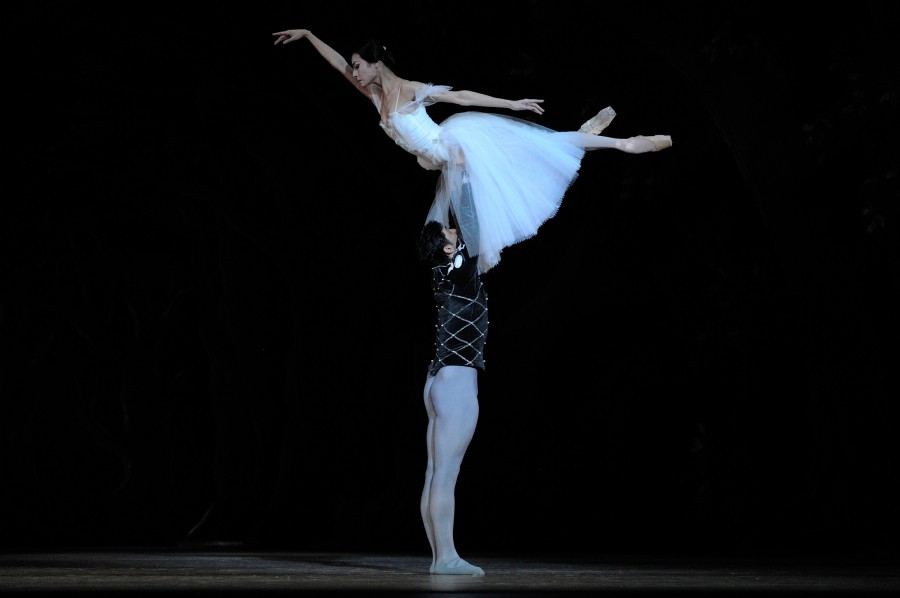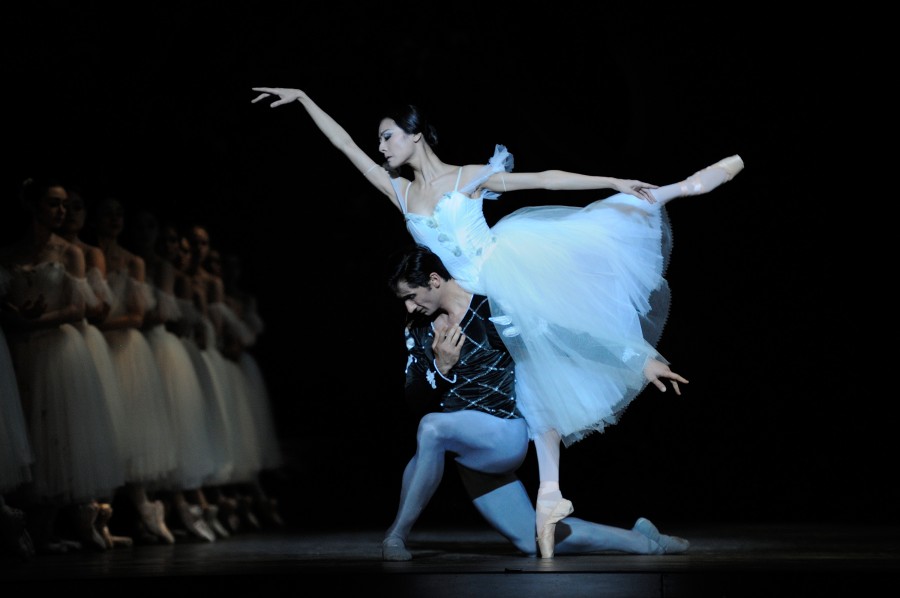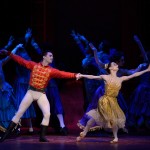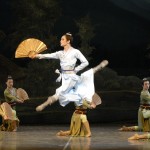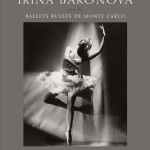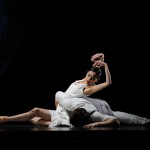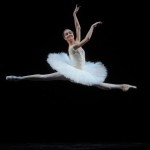Leigh Donlan reports from the War Memorial Opera House, San Francisco:
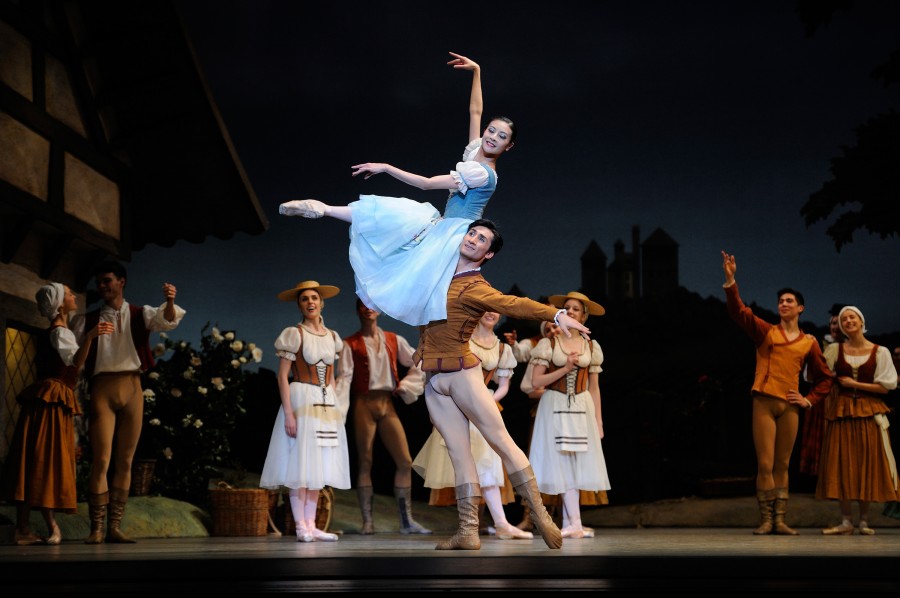
Yuan Yuan Tan, Davit Karapetyan and San Francisco Ballet dancers in Act I of Helgi Tomasson’s GISELLE (Photo: Erik Tomasson)
If a ballerina makes it far enough into her career to dance the title role of Giselle, she is considered a ‘complete’ dancer. This is a triple role, three different women in one- a fragile hearted girl, a broken hearted mad woman, and an eternal spirit of true love. It requires technical mastery, an otherworldly grace and vast dramatic range. How a dancer chooses to perform the title role says much about them as an artist. San Francisco Ballet cast five different Giselles for the show’s two week run, all magnificent principal company members, all greatly different. Ballet to the People had the pleasure of Maria Kochetkova’s interpretation of our beloved Giselle on Thursday evening.
From the start, Kochetkova’s Giselle was uniquely her own. She displayed a reserve that conveyed an inner knowing, rather than the naivety we commonly see at the ballet’s start. Her peasant girl remained somewhat cool; even at the critical point in the narrative – when she learns of Albrecht’s deceit – she never completely loses it. This is the infamous scene where the character descends into madness, and where the title role ballerina makes her mark, choosing the fate of her Giselle: she either dies of heart failure, or commits suicide, usually by stabbing herself with Albrecht’s sword.
Kochetkova chose heart failure, and made it appear the more noble choice, as if to say “I will not add further insult to injury.”
Joyful peasant dances enliven Act I, accompanied by the the San Francisco Ballet Orchestra under the direction of Ming Luke. The music makes this ballet soar, a gorgeous score composed by Adolphe Adam with arrangements by Friedrich Burgmuller, Ludwig Minkus and Emil de Cou. Equally enchanting is the timeless choreography of Marius Petipa, respectfully adapted by Tomasson.
Pascal Molat delivered a superb performance as Hilarion, the gamekeeper who is in love with Giselle. Despite his character’s crudeness, Molat managed to make him likable, and his dancing rivaled Taras Domitro’s brawny Count Albrecht. Esteban Hernandez was particularly strong in the pas de cinq, with a humble bravura to his exceptional jumps and turning sequences. Fellow pas de cinq dancer Wei Wang, on the other hand, was a bit overzealous, his head accentuations often knocking him out of balance. The most unlikeable characters, of course, were the royals who swaggered about onstage sneering at anything and everyone. Only one of the Russian wolfhounds joined the royal party in Act I (there are normally two, Roman and Genesis, both seasoned performers – however their impromptu mating spree onstage on Tuesday night evidently led to a casting change.)
Frances Chung played a powerful Myrtha in Act II, leading the soldierly, precise Wilis with steely command and flawless execution. The soloist Wilis, Koto Ishihara and Elizabeth Powell, worked better together here than they did in the peasant pas de cinq of Act I, their dancing more concentrated and stable. Albrecht’s walk of shame in Act II seemed too long, but rushed at moments; Domitro didn’t fill the time as effectively as he could have, but he hit his stride later, and his entrechat sixes were impressive. Kochetkova as Giselle’s risen spirit danced more beautifully than her mortal body ever could have, floating effortlessly. But the most moving part of Act II was the closing scene, when Giselle has won a pardon for Albrecht from Myrtha, and must leave him as the day dawns. It was the most heartfelt moment of the evening’s entire performance: Albrecht clutching Giselle’s lilies to his chest as she appears to be whisked away by a strong wind at sunrise, leaving many in the audience in tears as the curtain fell.
Visually, this was a beautiful production that brought out the true classical shape of this ballet, despite the few incongruous moments in Act I in the corps’ stylistic interpretation. Overall, Act II drew a stronger performance from everyone.
If you missed this triumphant Giselle, console yourself with Christopher Wheeldon’s full-length Cinderella in March.
Carla Escoda reported from the War Memorial Opera House earlier in the run:
San Francisco Ballet unveiled its latest Parisian import in Giselle on Sunday afternoon at the War Memorial Opera House, less than 24 hours after fielding a much-adored veteran in the same role in its season opener. With three more principal ballerinas poised to rotate through the iconic role through February 2, the fan clubs are buzzing.
Former Paris Opera Ballet soloist and newly minted SFB principal Mathilde Froustey gave a marvelously naturalistic performance on Sunday, as if born to dance the wide-eyed peasant girl with a heart of gold. Transformed into a ghostly spirit in Act II, Froustey managed to appear lighter-than-air while still retaining the flesh-and-blood charms of an innocent young maiden, albeit a much sadder one than in Act I.
The evening before, Yuan Yuan Tan set the bar very high with her somewhat more high-strung interpretation of Giselle in Act I, her twisted mad scene, and her devastating Act II metamorphosis into an eerie, otherworldly creature.
A casting coup paired her with the gallant, impetuous Davit Karapetyan in the role of Giselle’s faithless lover Albrecht, and faced her off against the glorious Sofiane Sylve in the role of Myrtha.
The true heart of this ballet, however, is not the delicate peasant girl gone mad, but Myrtha, the fearsome Queen of the Wilis. Sylve presents the full complexity of this character: a woman once wronged, who wields a terrifying power and metes out her own brand of justice, but is occasionally stirred to self-doubt. There is a fierce beauty to Sylve’s implacable yet ethereal technique, a soft finish to her steely balances, a poetic pliancy in the upper body and in her softly bounding leaps.
Froustey was pitted against fellow newcomer Simone Messmer as Myrtha. This former American Ballet Theatre soloist — who has distinguished herself most recently in the work of Alexei Ratmansky — gave us an icy, sullen Myrtha, a one-note reading of the role, her strident interpretation and baleful expression verging on camp. The stiffness of her upper back and shoulders contrasted unfavorably with the fluid upper bodies of Julia Rowe and Shannon Rugani in the Lead Wili roles. (Rugani in particular looks like a good bet for the next generation of Giselles.) Messmer’s soaring jumps were thrilling, however, and her all-out hostility toward her male victims and her censure of Giselle were priceless.
Giselle being a firmly feminist ballet, the male characters often have a hard time winning our sympathy. Davit Karapetyan is a gratifying exception. He played Albrecht as ardent and headstrong but fundamentally decent, crushed at the fall-out from his careless deception. Tender and solicitous of Giselle, we knew that he had truly fallen for her. He and Tan play out all the treacherous angles of this relationship with great skill and abandon.
Partnering Froustey, the gorgeous Tiit Helimets was more aloof and self-absorbed, the entitled aristocrat to whom wooing village maidens was a bit of a sport. It’s a wonder those village folk didn’t see through him right from the start. His admirable, clean allegro technique and beautiful lines lacked Karapetyan’s raw emotional attack. When Giselle confronts Albrecht after Hilarion exposes him as a fraud, Karapetyan pushes Tan away from him, guilt written all over his face. Helimets merely turns away from Froustey and from the audience, so we don’t get to read his face at that dramatic moment. In Act II, Helimets’ string of entrechats sixes (beaten jumps) flickered lightly and brilliantly, whereas Karapetyan’s had the power of a rocket launcher — both had the audience in raptures, but Karapetyan drove home the desperation of the moment when Albrecht is being sentenced to death by the imperious Myrtha.
Martin West conducted the superb San Francisco Ballet orchestra for both casts and delivered the finest rendition of Adam’s score that Ballet to the People has ever heard: crisp, poignant, and blessedly free from the cheesy, circusy flourishes that afflict other arrangements.
– More in our full review in the Huffington Post. –

